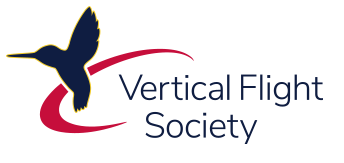The Vertical Flight Society has announced the group recipients of its prestigious awards program for 2019. Since its establishment in 1944, the Society’s awards program has paid tribute to the outstanding leaders of vertical flight and served as a catalyst for stimulating technological advances. This year’s winners will be recognized at the Grand Awards Banquet on May 15, 2019, during the Vertical Flight Society’s 75th Annual Forum & Technology Display in Philadelphia, Pennsylvania.
“For 75 years, the Vertical Flight Society has been recognizing the most significant vertical flight accomplishments around the world,” said VFS executive director Mike Hirschberg. “The achievements recognized this year demonstrate the incredible capabilities of the global vertical flight community.”
The Society’s Capt William J. Kossler, USCG Award is given for the greatest achievement in the practical application or operation of vertical flight aircraft, the value of which has been demonstrated by actual service during the preceding year. This year, the Kossler Award is being presented to Oregon Army National Guard 168th Aviation Regiment CH-47F crew. On July 13, 2018, the crew successfully rescued an injured hiker and a six-person rescue team during a five-minute-long hovering two-wheel pinnacle landing at the 11,250-foot (3,730 meter) summit of Mount Hood in Portland, Oregon.
The Grover E. Bell Award is given for an outstanding research and experimentation contribution to the field of vertical flight development. This year’s recipient is the Bell V-280 Valor Team. Over the first year of flying, the team generated over 1,000 flight test points, gathering critical data on the performance and characteristics of a clean-sheet design rotorcraft. During more than 90 hours of flight testing, the fly-by-wire V-280 demonstrated forward flight at 280 knots (518 km/h) true airspeed, as well as low and high-speed agility.
Tata Boeing Aerospace Limited is this year’s recipient of the Vertical Flight Society Supplier Excellence Award. This award is given to a supplier who, through the quality, innovativeness and cost-effective technology of its products, has made a notable contribution to improving the state of the art of vertical flight aircraft. The first AH-64 Apache fuselage was delivered from the TBAL Hyderabad, India, facility to Boeing in the summer of 2018, only a year after the facility became operational. TBAL is now the sole producer of AH-64 fuselages worldwide, and will also produce secondary structures and vertical spar boxes for the Apache.
The Leonardo International Fellowship Award recognizes significant contributions to international vertical flight cooperation. This year’s winner is the S-70i Chile Air Force Program Engineering Team — comprised of members of the Chile Air Force (FACh), plus manufacturing and test teams at Sikorsky’s Stratford, Connecticut, and PZL Mielec, Poland, facilities. The team conducted an extraordinary international cooperative effort to design, develop, test, qualify and deliver six highly-configured search-and-rescue (SAR) variants of the S-70i International Black Hawks in less than two years.
The Robert L. Pinckney Award is given in recognition of notable achievement in manufacturing research and development for vertical flight aircraft or components. This year’s recipient is the FARDS Demonstration Gear Box Development Team, which includes the US Army’s Combat Capabilities Development Command Aviation and Missiles Center’s Aviation Development Directorate (ADD) and Sikorsky Aircraft Corporation, a Lockheed Martin Company, along with Sikorsky’s suppliers. The team demonstrated the ability to develop drive system technologies with the performance and cost characteristics necessary to enable the Army’s Future Vertical Lift and Black Hawk Upgrade platforms.
The Harry T. Jensen Award is given for an outstanding contribution to the improvement of reliability, maintainability, safety or logistics support through improved design or technical achievement. This year’s award is given for the CH-53K Flight Control System Team, which developed and successfully flight demonstrated a low-speed control system that significantly reduces pilot workload while operating in Degraded Visual Environments (DVE).
This year’s recipient of the Howard Hughes Award, given in recognition of an outstanding improvement in fundamental helicopter technology brought to fruition in the previous year, is the Advanced Chinook Rotor Blade (ACRB) Team, including team members from the Boeing Company, the U.S. Army Engineering Directorate and the U.S. Army Aviation Development Directorate. The ACRB team developed, qualified, and flight tested backward-compatible rotor blades for the H-47 that increases lift by over 1,600 lbs. (7.1 kN) at high/hot conditions without adversely affecting other performance factors such as vibration and forward flight speed or requiring additional power. The new blade design also improves maintainability and decreases life cycle costs.
The Vertical Flight Heritage Sites Program is intended to recognize and help preserve locations with the most noteworthy and significant contributions made in both the theory and practice of helicopter and other VTOL aircraft technology. This year, the Henrich Focke Wind Tunnel in Bremen, Germany, was selected for its historic significance. The wind tunnel, finished in 1963, was built by German helicopter pioneer Henrich Focke and was his last research laboratory. In addition, the site was previously the workshop of the carpenter who had built the first wind tunnel model for Focke-Wulf in 1923.
The Vertical Flight Society separately announced the winners of its individual awards for 2019.





